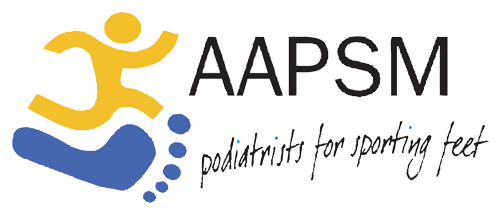Ingrown Toenail Treatment and Removal
Gold Coast Foot Centres podiatrists are trained and qualified to perform the surgical removal and prevention of ingrown toenails under a local anaesthetic using individually sterilised equipment.
What Is An Ingrown Toenail?
A common but painful condition, an ingrown toenail happens when one or both sides grow into the sides of the flesh of the toe.
Most often affecting the big toe, an ingrown toenail happens when the nail grows beyond its normal nail bed and becomes fixed into the skin.
Usually causing redness, minimal swelling, and pain, experiencing an ingrown toenail is more complicated in people with diabetes due to poor blood flow.
Additional risk factors can include certain medical conditions, trimming nails too short, and poor fitting footwear. More on this below.
Ingrown Toenail Causes
An ingrown toenail is a condition treated by the podiatrists at Gold Coast Foot Centres. Ingrown toenails occur commonly, but not exclusively, in one or both sides of the big toe nail where the nail edge pushes into the surrounding skin.
This can cause pain and irritation to the skin, often leading to infection if left untreated.
What Causes an Ingrown Toenail?
An ingrown toenail can be a result of footwear, existing medical conditions, and personal hygiene.
Among the most common causes of ingrown toenails, our clinical team usually see:
Trimming toenails too short
Wearing poor-fitting footwear that crowds the toes (including sports footwear like ballet shoes and football boots)
Injuring a toenail
Nail infections, personal hygiene habits that neglect foot or nail care
Heavy perspiration. Sweat can soften the skin and nails, causing inappropriate growth patterns
Certain medical conditions including diabetes. Due to reduced blood flow to the feet, people with diabetes are at a higher risk of ingrown toenails and additional complications if they occur.
Regardless of your lifestyle, having well-fitted shoes that don’t crowd your feet and support your personal or professional needs each day is critical to nail and foot health.
Signs and symptoms
Common signs and symptoms of ingrown toenails include:
Pain around the edge of the nail
Redness and swelling around the nail
Clear/ yellow discharge
Ingrown Toenail Treatment
Ingrown toenails are simple to treat if treated early. Once an ingrown toenail becomes red, swollen and infected, it becomes a lot more difficult to treat.
For this reason, it is best to consult with one of our podiatrists as soon as you experience discomfort.
It is not recommended that you treat your own nail if you suspect an ingrown toenail, as incorrect trimming technique and unsterilized instruments can lead to further infection and pain.
When the ingrown toenail is not too serious, our podiatrists can quickly and painlessly remove the offending nail spike.
This simple procedure is completed in our clinics using a special instrument to trim the nail and will reduce your pain immediately.
A safe and effective procedure can be completed in our clinics for more severe or reoccurring ingrown toenail cases.
This is called a partial nail avulsion and can provide a more permanent solution for ingrown toenails.
Our podiatrists use local anaesthetic, so no pain is felt throughout the procedure.
Patients only require the rest of the day off work and can return to work the next day.
Prevention
While some people will be more prone to toenail problems than others (even with proactive preventative measures), there are some steps you can take to prevent or minimise the risk:
Trim toenails straight across and keep them at a medium length.
Trimming toenails too short is one of the leading causes of ingrown nails, and letting them grow too long can lead to irritation around the nail bed and skin due to friction inside the shoes.
Wear shoes that fit properly and offer enough space for your toes. While some sports people will be required to wear specific footwear for their careers, proper foot and nail hygiene should be given particular focus during down time.
If you work in an industry that requires protective footwear, make sure to have your shoes properly fitted before purchasing to ensure comfortable wear during long shifts without compromising your foot health.
Check your feet. Much the same as checking your skin or changes to your teeth, we recommend checking your feet regularly to ensure optimal nail health–especially if you’re in a high-risk category that makes you more prone to ingrown nails.
While some patients will still experience ingrown toenails even when taking active preventative steps, early intervention and treatment can mean the difference between an easy fix and the possibility of antibiotics and minor ingrown toenail surgery.
Ingrown Toenails FAQs
-
We always recommend speaking to a medical professional about ingrown toenails, even if you’ve experienced one before.
If this is your first instance, it’s important that you have an ingrown toenail treated by a qualified professional.
Doing so at home could risk infection or damage the nail.
While some patients may be willing to wait out the nail growth cycle and see if the situation will remedy itself in time, ingrown toenail symptoms that include swelling, redness, increased pain, or infected ingrown toenails should always be treated by a medical professional.
-
A number of factors that commonly contribute to ingrown toenails include poor fitting shoes, shoes that crowd the toes, heavy perspiration, trimming toenails too short, and some medical conditions.
While some patients may only struggle with an ingrown toenail once, others will suffer from repeated ingrown toenails even when taking steps to prevent ingrown toenails.
-
If you’re dealing with an ingrown toenail that shows no sign of redness, infection, swelling, or pain, you may be able to wait a few weeks while the nail continues to grow.
In some cases, that nail may grow out of being embedded in the skin.
For patients who are in high-risk categories for complications (including people with diabetes), we don’t recommend a wait and see approach.
Likewise, if you’re noticing any of the above concerns, that the situation is worsening in time.
-
No, we never recommend cutting an ingrown toenail, even if you have experienced one before.
Why? Because ingrown toenails grow into the skin, you can risk infection, damaging the nail bed, or damaging the cuticle.
Furthermore, if you’re prone to recurring ingrown toenails, it would be worth working with a qualified medical professional to examine the cause and see what lifestyle changes may prevent another one from growing.
-
Some patients will be more prone to ingrown toenails due to a variety of factors that include:
1. Select medical conditions: People with diabetes are more prone to foot and toenail problems due to potentially limited blood flow to the feet.
2. Lifestyle: Athletes, tradespeople, and other professionals who spend significant time on their feet at work and in restrictive footwear are at higher risk for ingrown toenails.
If your workplace requires speciality footwear to complete your role, make sure to have your gear properly fitted before spending long days on your feet.
3. Heavy perspiration: Skin and nails are softened by heavy perspiration, which can lead to a higher risk of nails growing into the skin instead of staying within the usual nail bed parameters.
If you are suffering from recurring ingrown nails, we recommend speaking with a specialist podiatrist who can review certain lifestyle factors and recommend practical ingrown toenail management steps.




